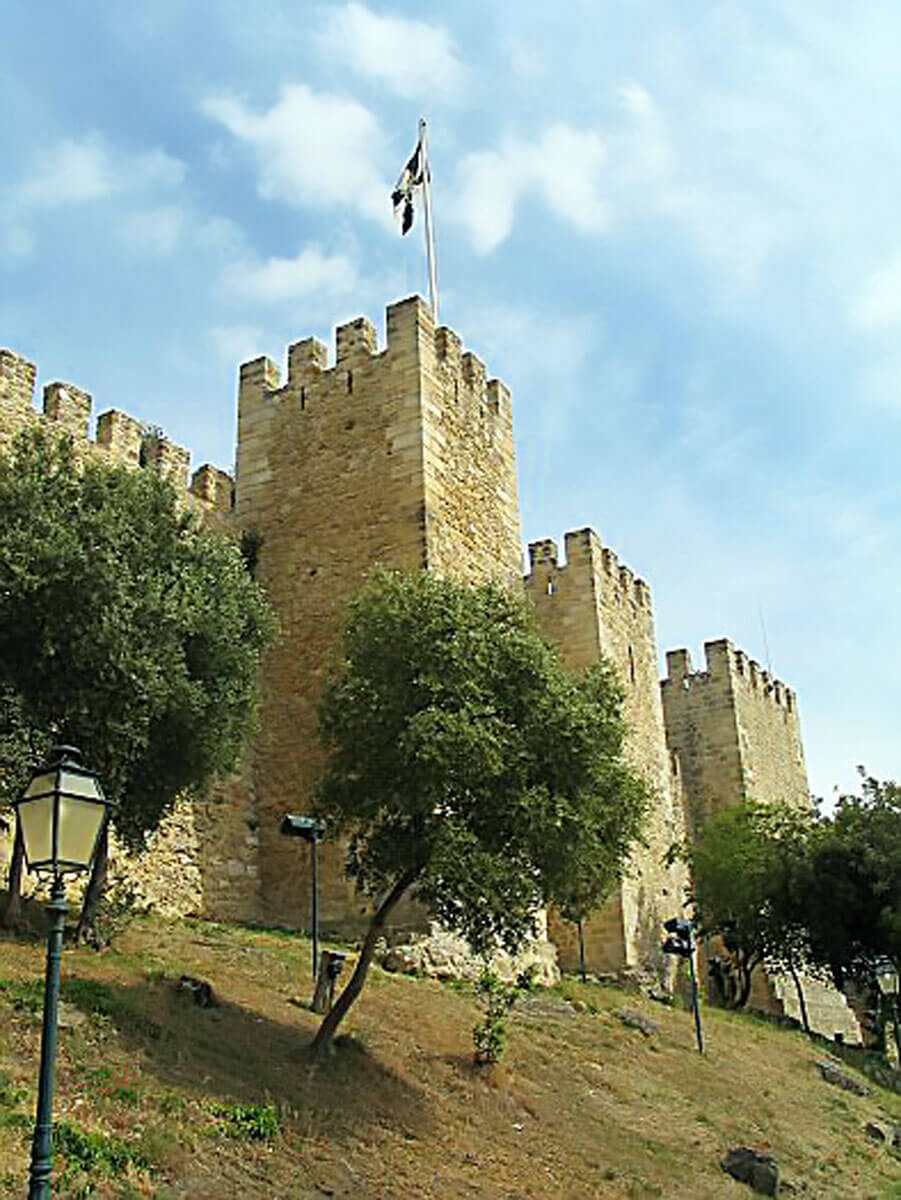Visit Lisbon
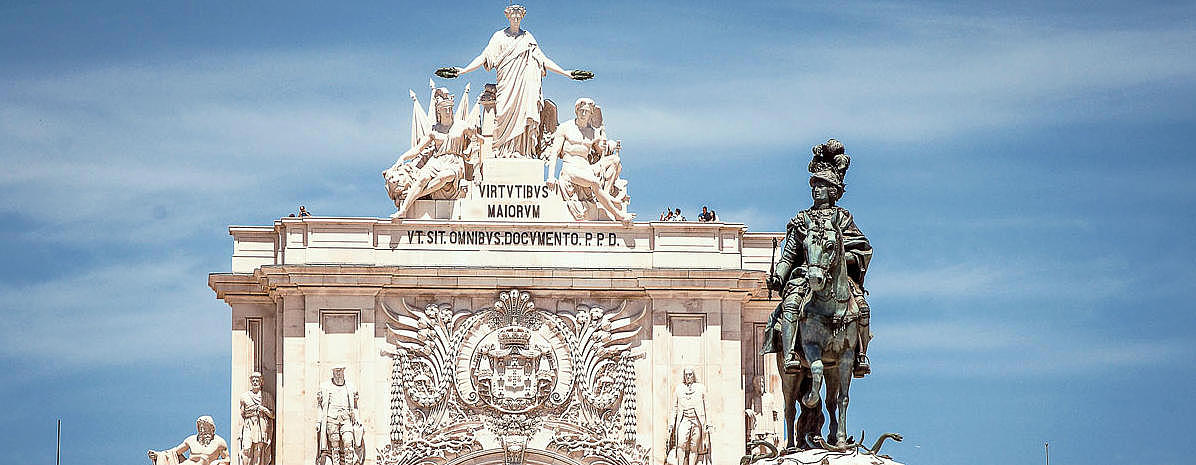
Catedral Sé Patriarcal
Patriarchal Cathedral or Church of Saint Major Mary (Igreja de Santa Maria Maior) is located in Alfama, Lisbon and looks rather inconspicuous from the outside. However, the church scores points with its interior and it is also called the Portuguese Notre Dame by some – as the façade bears a certain resemblance to its French counterpart.
The cathedral has mainly Romanesque and Gothic elements in its construction. The construction started in 1147 (when D. Afonso Henriques, the first King of Portugal reconquered the city from the Moors) and it has been rebuilt several times since. It is also the oldest church and the main church in Lisbon.
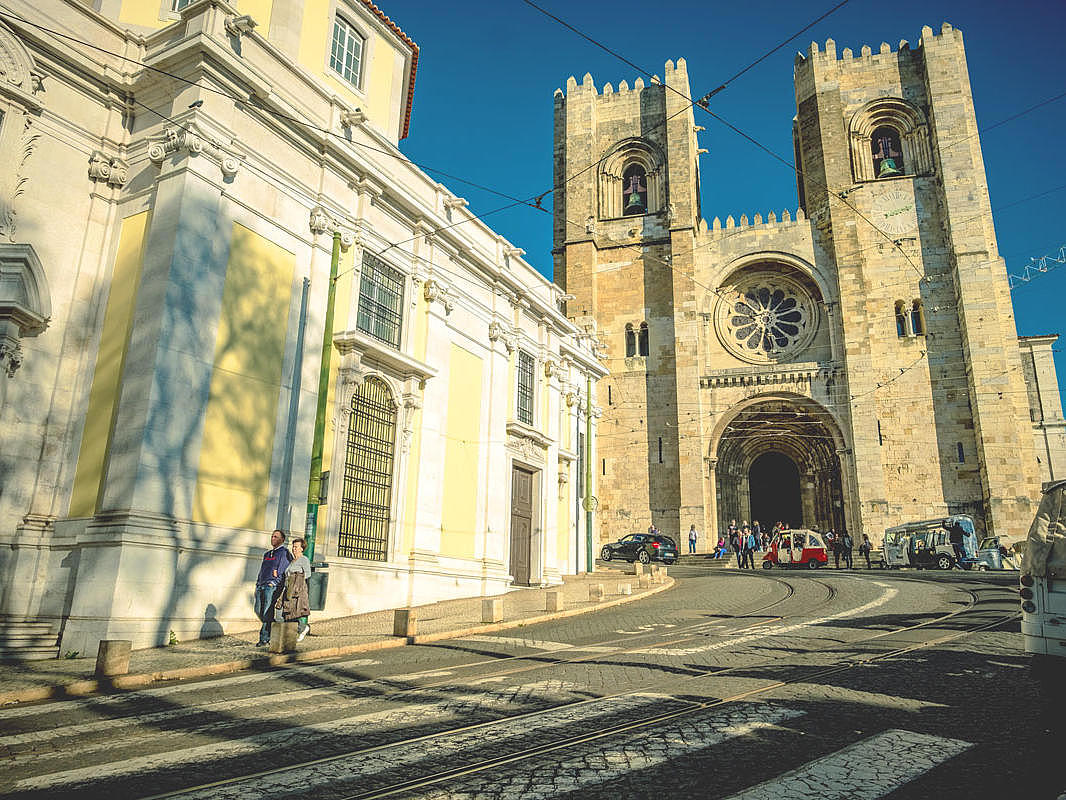
Mosteiro dos Jerónimos
The gigantic Hieronymite monastery – Mosteiro dos Jerónimos – is located in Belém, Lisbon, and scores points with its very long – almost 300-metres-long park. The building of the Monastery was requested in 1496 (Age of Discoverys and Vasco da Gama had just returned from a successful voyage to India), started in 1501 and completed in 1601. For ten euros you can visit the monastery and be amazed by its imposing architecture.
The church in the monastery, the museum and the cloister are particularly recommendable. The church also houses the tomb of Luís de Camoes, the national poet of Portugal.
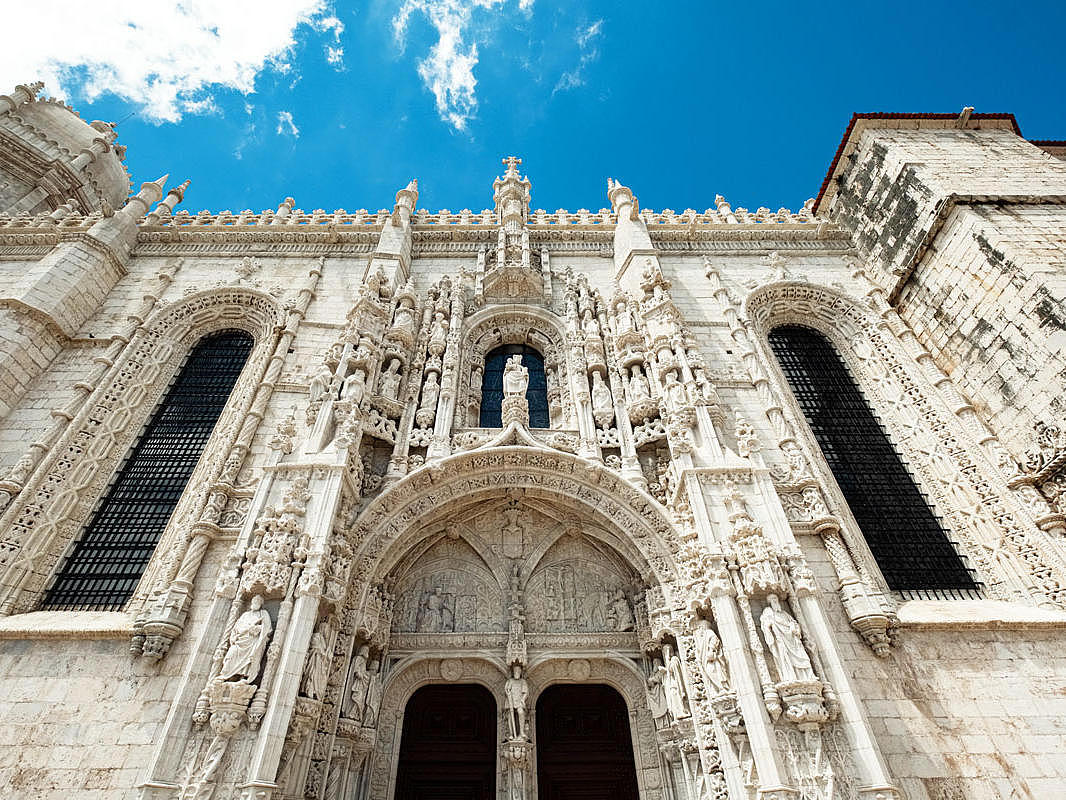
São Vicente de Fora
One of the city’s only Renaissance churches is located not far from the castle district – the São Vicente de Fora. Fora translates as “outside the walls” because the church was built outside Lisbon’s city walls.
The Roman Catholic Church was begun in 1582 and completed in the 17th century. The way up to the towers / roof of the church is worthwhile, as from up there you can enjoy a wonderful view over the whole city and the harbor.
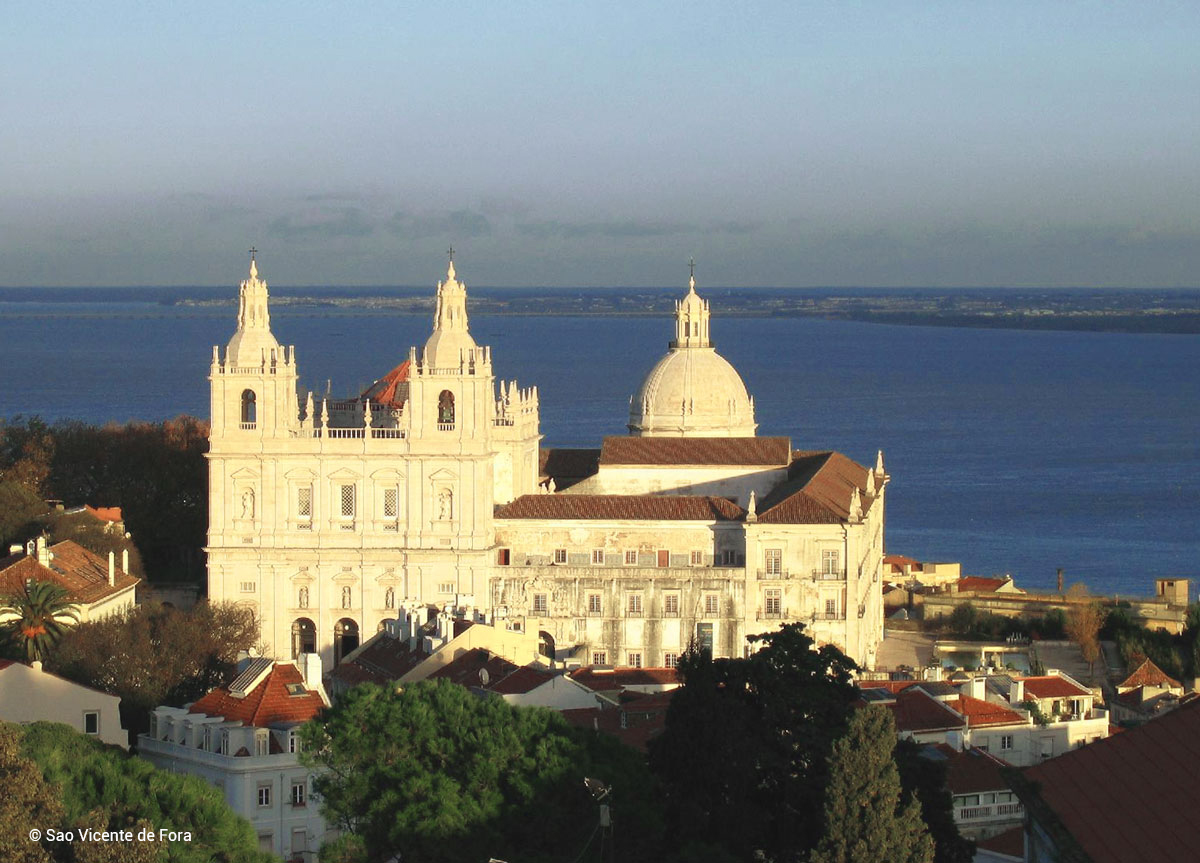
Igreja Santa Engrácia
The impressive Igreja de Santa Engrácia (Church of Saint Engrácia) or Panteão Nacional as the Portuguese call it, is located in the Alfama district. This church is considered by many to be one of the most beautiful and worth seeing churches in Lisbon.
The beginnings of the church date back to 1681 and almost 300 years later – in 1966 – it was completed. Once conceived as a church with a central dome framed by four towers, today the church stands out because of the towers were never completely built. These are used as viewing platforms, offering a wonderful sight over Lisbon. The church also houses the tomb of Amália Rodrigues, the mother of Fado (tradicional musical style) and Almeida Garrett, poet.
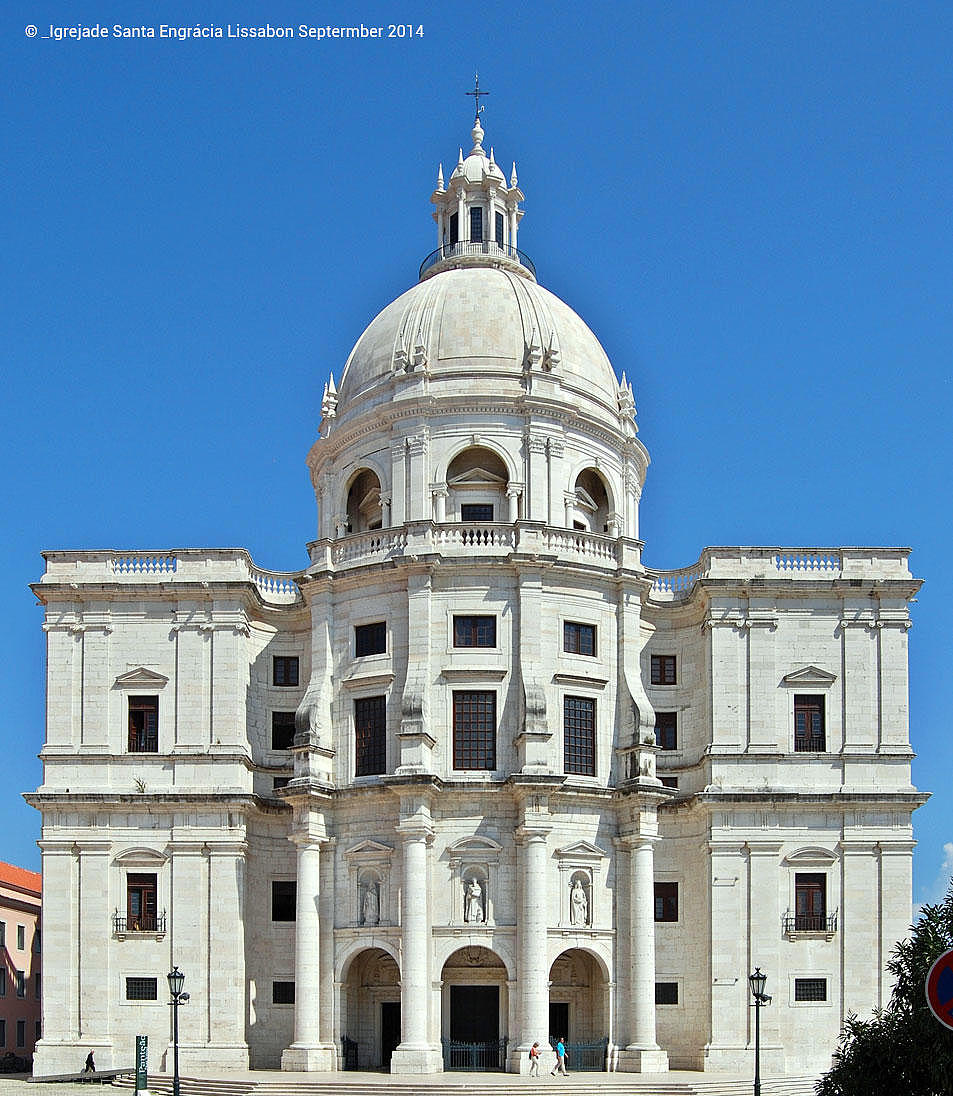
Torre de Belém
In the bay of Lisbon stands the Torre de Belém (Belem Tower) which is one of the first monuments that can be seen from the water.
The construction started in 1514 and finished in 1519. Originally, there was a tower on each side of the bank but the twin tower was destroyed in the earthquake of 1755.
To explore the UNESCO World Heritage Site from the inside, it is worth buying a ticket in advance to avoid long queues.
From the tower, the Mosteiro Monastery and downtown Lisbon are only a 15-minute walk away.
The tower is now seen as a remembrance of the maritime discoveries of new worlds and Lisbon being the world’s main trade hub in the 15th and 16th centuries.

Padrão dos Descobrimentos
On the banks of the Tagus River stands the Padrão dos Descobrimentos (translated: Monument of Discoveries).
The monument was erected in 1960 on the 500th anniversary of the death of Henry the Navigator. It shows 33 important personalities of the late Middle Ages in Portugal and features an auditorium for 101 people with a stage, an exhibition hall above, and a staircase from which there is a view over the Bay of Belém.
In front of the monument, a wind rose made of mosaic stones adorns the floor. It was a gift from the Republic of South Africa and shows the routes of the Portuguese explorers in the 15th and 16th century.
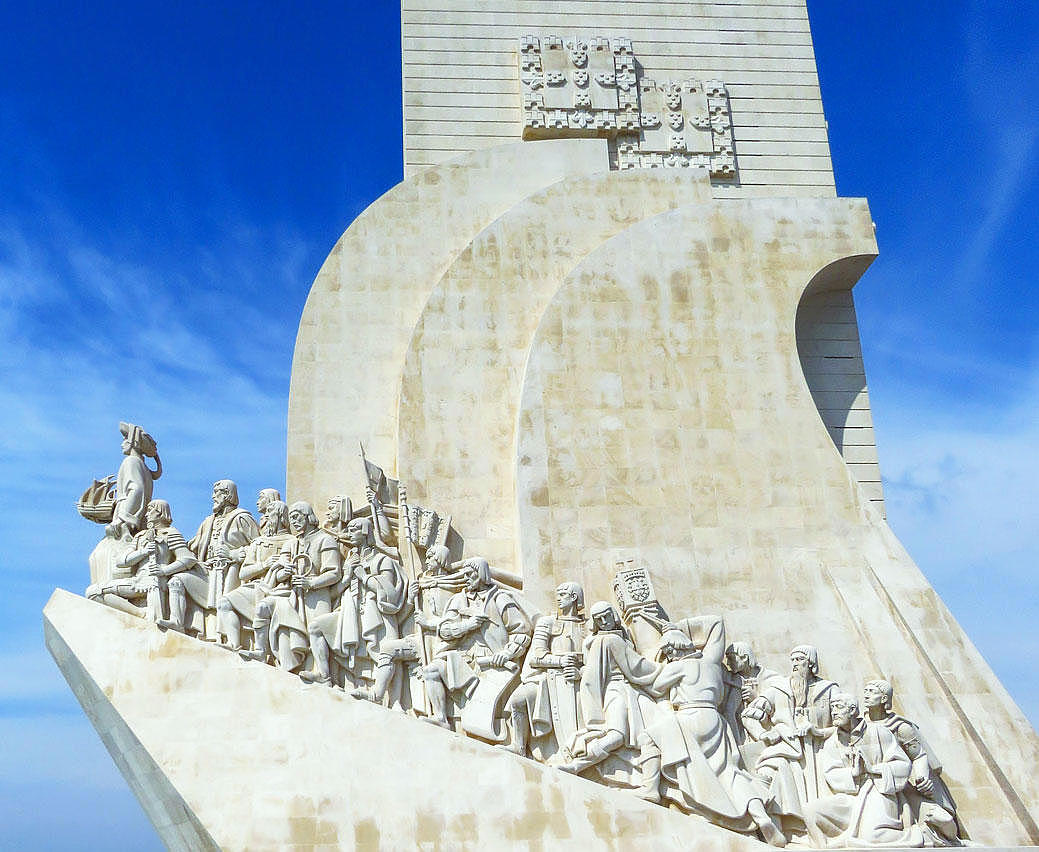
Arco da Rua Augusta
If you want to go to the Praça do Comércio (Square of Commerce) during your time in Lisbon, you cannot miss the Arco da Rua Augusta (Augusta Street Arch).
The triumphal arch forms the passage to the square.The viewing platform on the Arc de Triomphe offers a unique panorama of Lisbon and the Tagus River.
The atmosphere is especially beautiful at sunset.The architecture comes from the pen of the city planner Marquês de Pombal and has adorned the entrance to the Praça do Comércio since 1755.
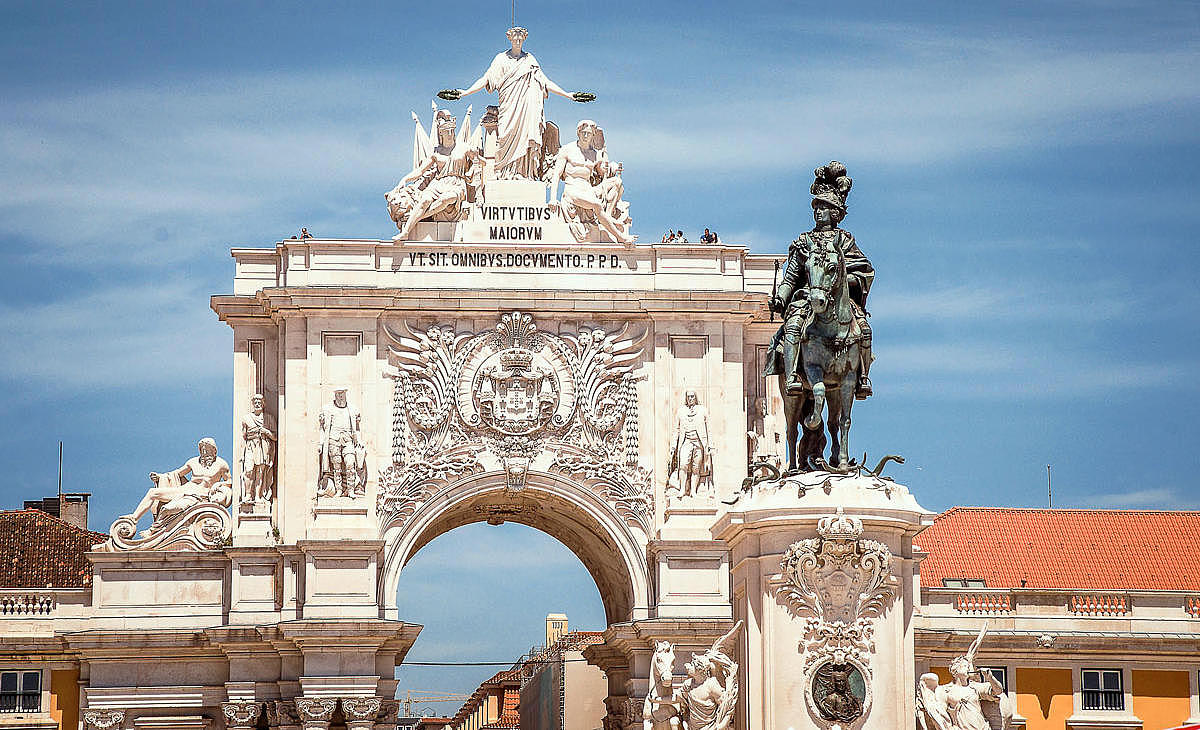
Santuário do Cristo Rei
To see a statue of Jesus Christ, you do not necessarily have to travel to Brazil. In the Almada district on the other side of the Tagus River in Lisbon stands the Sanctuary of Christ the King, a 28-meter-high statue of Jesus Christ. Its height makes it the seventh tallest statue of Christ in the world. The 75-meter-high base and the direct location on a hill make the statue look vary sublime.
The statue of Jesus Christ was commissioned after a visit to Brazil by the then Archbishop of Lisbon.
This statue was built as gratitude to God, sparing Portugal from World War II. Therefore, in 1959 the statue was inaugurated after ten years of construction.
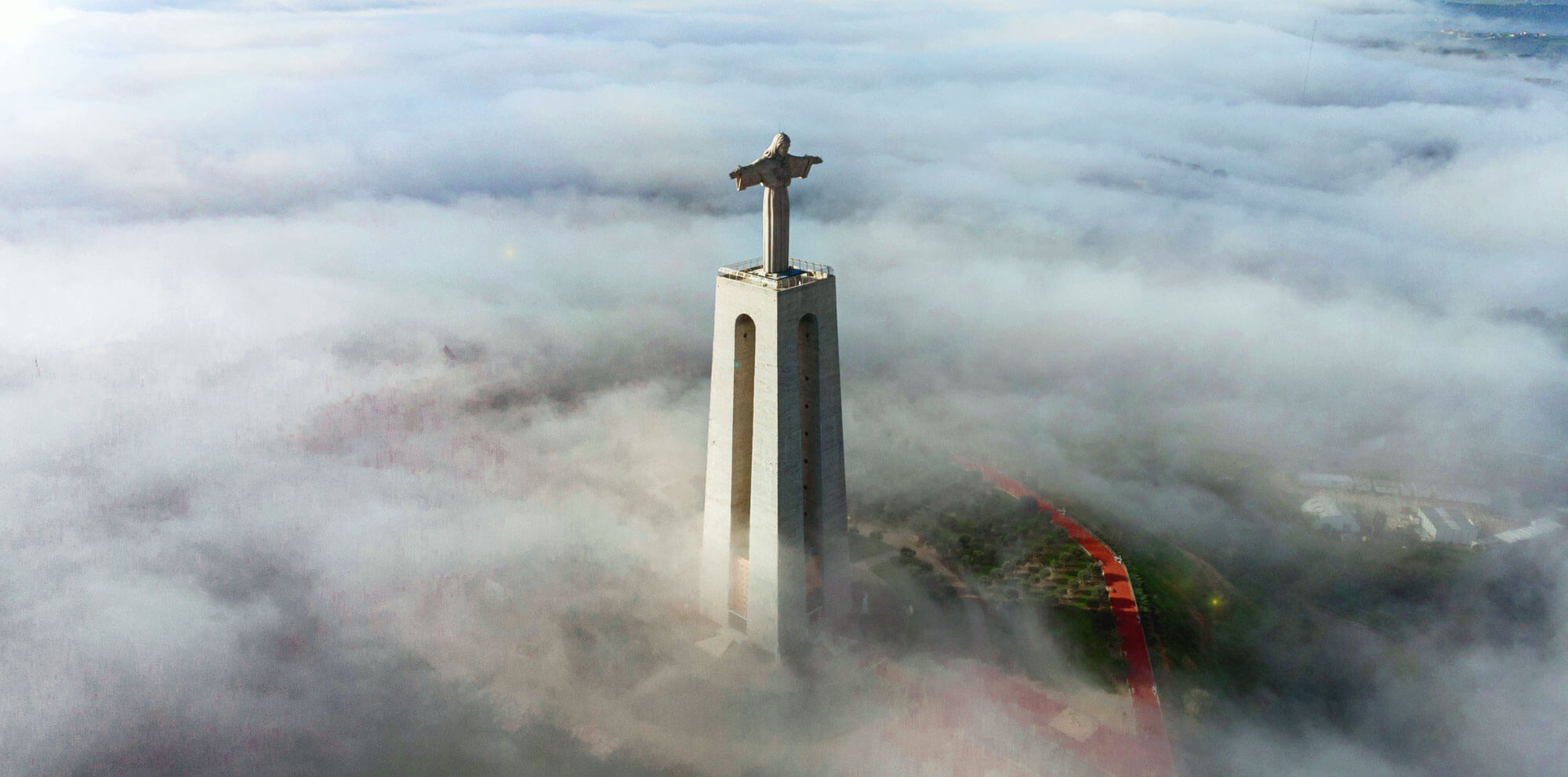
Ponte 25 de Abril
No, that’s not the Golden Gate Bridge in San Francisco – but it looks just the same. During your Lisbon visit you can see the Ponte 25 de Abril (Bridge Of April 25th), originally called Ponte Salazar (Portuguese nationalist dictator) but renamed after the date of the so-called Carnation Revolution in 1974.
The construction started in 1962 and after 4 year it was completed, led by the American Bridge Company. The steel for the bridge was imported from America. With its total length of 2,278 meters, it is the third longest suspension bridge in the world and connects the district of Alcantara and the city of Almada on two sides of the Tagus.
The bridge is passable by car as well as train but closed to pedestrians. Every day the bridge is crossed our used by almost 400,000 people in about 150,000 vehicles. For James Bond fans this is a place to be in Lisbon, because in 1969 George Lazenby alias James Bond drove over the bridge in “On her Majesty’s Secret Service”. So, you can breath real James Bond air during your Lisbon trip.

Eléctrico 28
What yellow cabs are to New York, the yellow streetcar 28 crossing the Alfama & Baixa district is to Lisbon. The historic trolleys from the 1930's are a real experience and pass some landmarks like the Catedral Sé Patriarcal, the Basílica da Estrela or the Jardim da Estrela. Since the streetcars are very popular, it is wise to board at the start / end point to ensure a seat. If you do not get off, it is almost like a sightseeing tour.
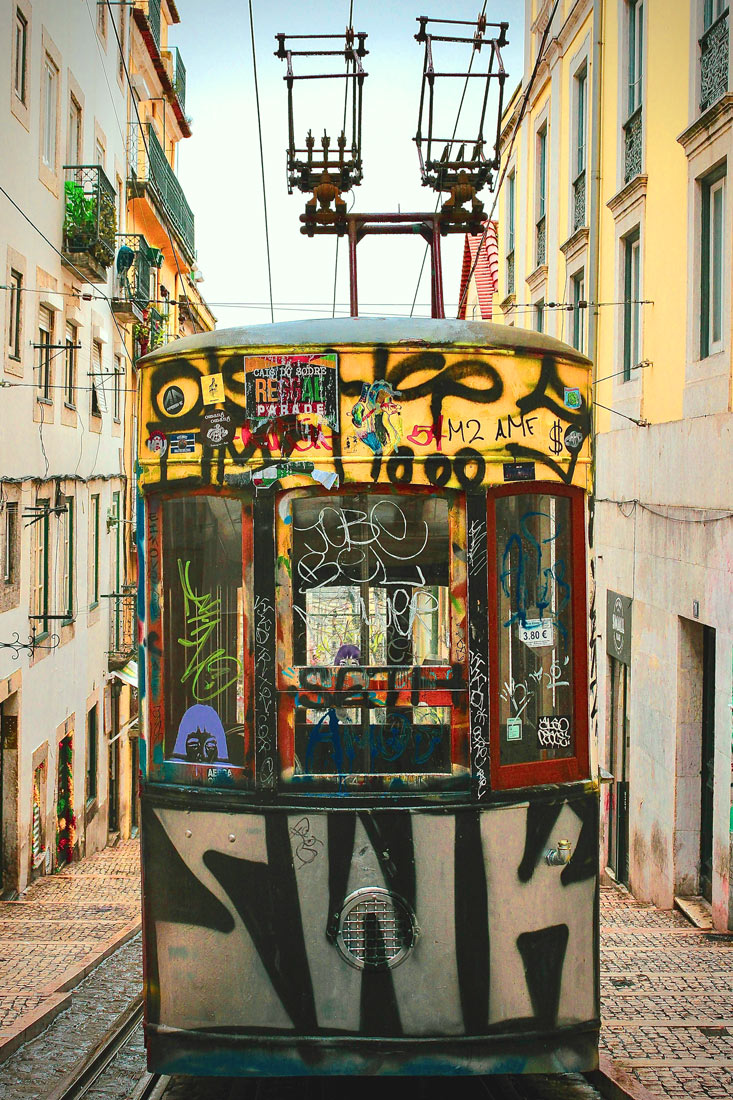
Praça do Comércio
The Praça do Comércio (Square of Commerce) is a large square in the Baixa District, downtown, and one of the best places to visit in Lisbon. Before 1755 until the great earthquake, the old royal palace was located here and goods from the colonies of that time were traded at the nearby port – hence the name of the square.
During the sightseeing tour of Lisbon, you actually pass at least once through the large square, which is surrounded by the former walls of the palace and equestrian figures, in the center shows the statue of King Dom José I.
The square is also called the reception hall for the visitors of the city and many exhibitions and events are held in the nearby buildings. Also worth a visit is the interactive journey through the city’s history at the innovative Lisbon Story Centre.
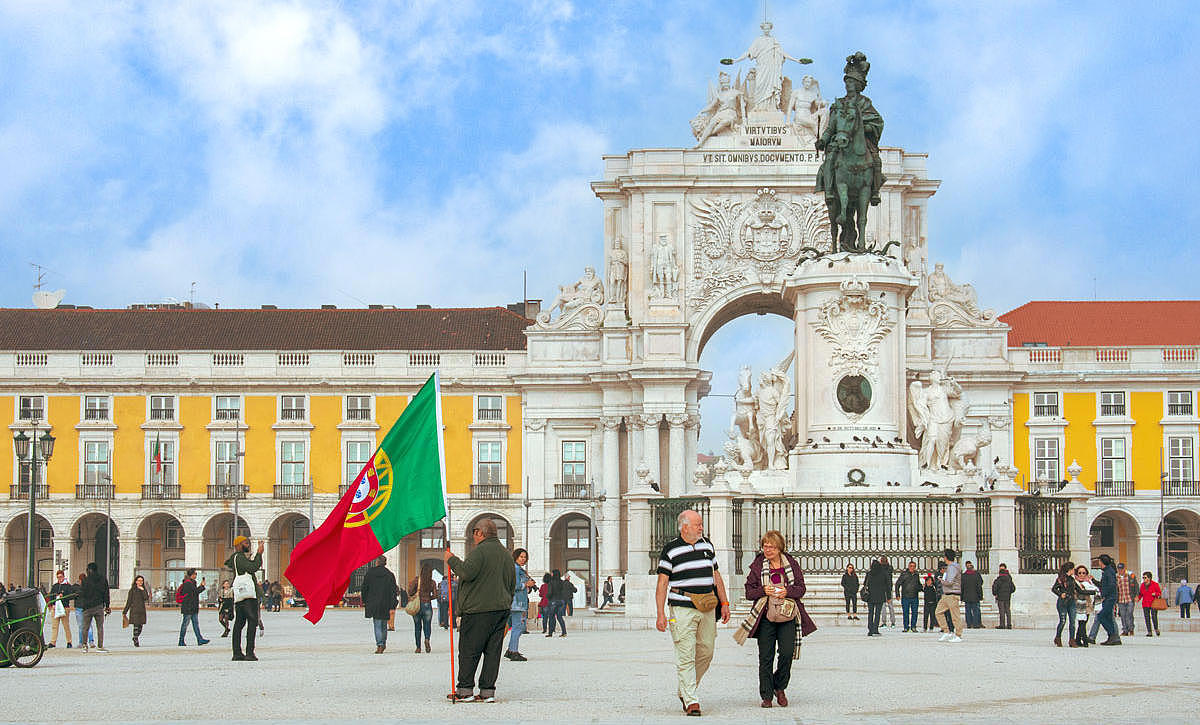
Elevador de Santa Justa
To travel from the lower city to the upper city, Lisbon has numerous elevators. One is the Elevador de Santa Justa (Elevator of Fair Saint), which connects the Rua de Santa Justa and Largo do Carmo.
Originally powered by steam engines, it is now powered by an electric motor to overcome the eight-meter height difference. Once at the top, it is recommended to go up the spiral staircase to admire the drive of the elevator.
At the top of the elevator there is a cafè that impresses with a magnificent view. To avoid large queues, it is recommended to ride from top to bottom. The queue to go from the bottom to the top is very long in most cases.
Alternatively, walks along the Rua do Carmo, Rua Garret and Calçada do Sacramento are beautiful as well.
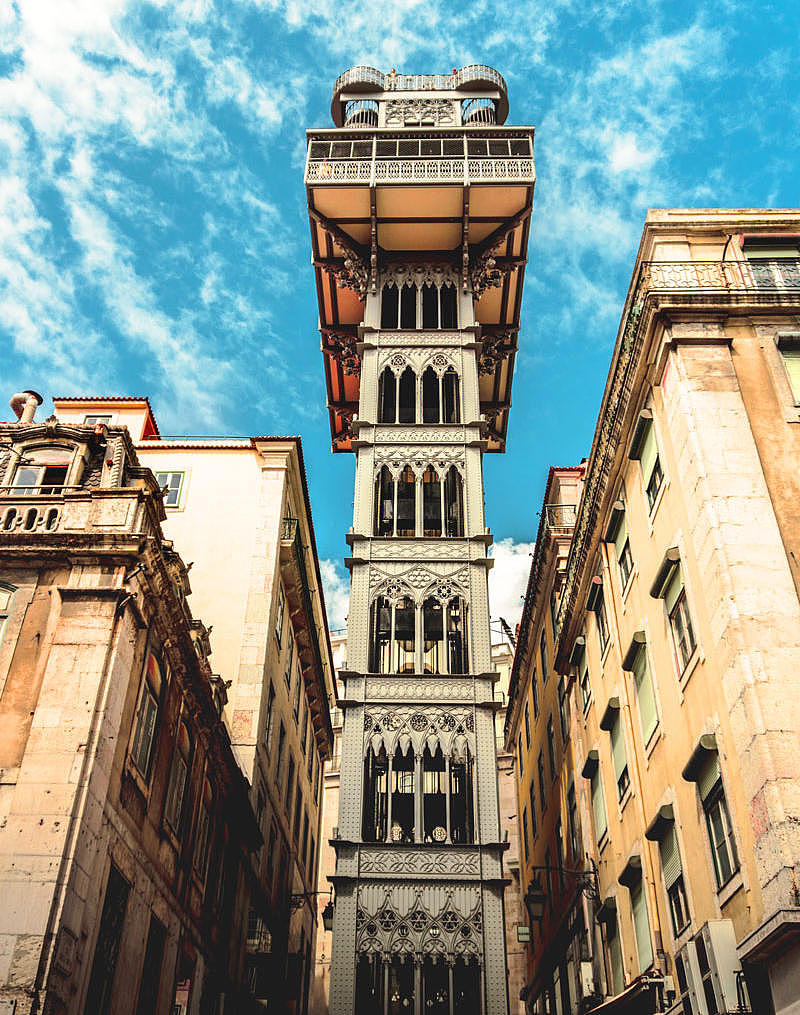
Elevador da Bica
Unlike the Elevador de Santa Justa, the Elevador da Bica is not an elevator but a streetcar that climbs a height of 45 meters in 250 meters length.
The area around the streetcar is a large staircase where you can also walk up, but the streetcar is a highlight not to miss.
In 2002, the streetcar was listed as a historical monument. At the time it was over 100 years old.
During city festivals, the streetcars are decorated by artists with selected colorful motifs.
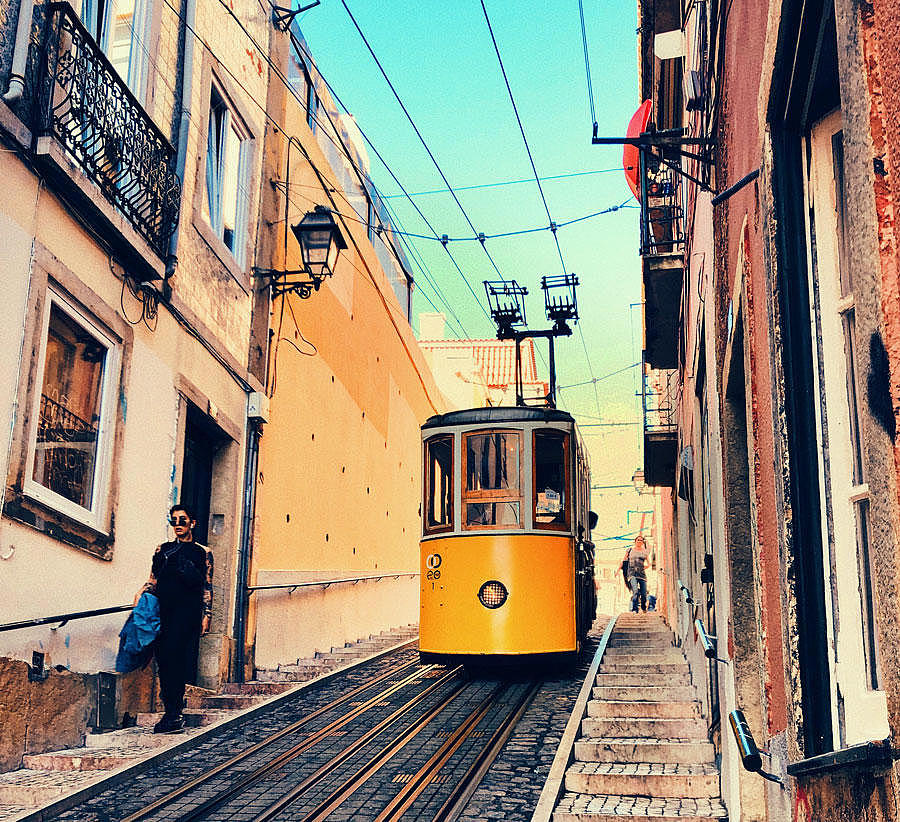
Castelo de São Jorge
The Moors built the fortress de São Jorge (St. George’s Castle) and nowadays you have a beautiful view over Lisbon and the Tagus from the imposing old fortress.
The climb to the castle is an experience – the path leads through the old town and past numerous vantage points that invite you to linger and marvel.
Inside the castle there is an exhibition about the history of Lisbon and in one of the towers a 360-degree picture offers the view of Lisbon.
There is a restaurant and a café for the refreshment, as well as two squares inside the castle, where you can also play boules and dominoes.
